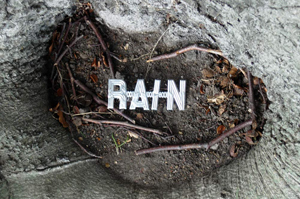Mysterious hole - help please!
To think that London, or anywhere else for that matter, does not belong to any one demographic
Should women have equal pay and opportunities?


How do you work out whether there’s a problem with drainage in your garden? It's an important question because plant roots need to absorb oxygen to grow and breathe and if the soil is waterlogged they can't get what they need.
Use your eyes! The best indicator of waterlogged soil is moss on the surface. Sedges and other plants that require moisture all year round - flag irises and willow trees - also suggest poor drainage. And nothing beats checking the ground after a heavy rainfall - you'll be able to see how quickly water drains away.
A more advanced way of working out the state of your drainage is to dig a couple of holes approximately 40 centimetres deep at various points around the garden after a heavy rainfall. If there's not a lot of water in the holes a few hours later, you may be able to work with the soil conditions in the way you design the garden - using raised beds and planting with the correct vegetation. If there's a lot of water still in the holes, then you definitely need to work on the drainage.
Waterlogging can have various causes: a high water table, heavy topsoil or an impervious layer of subsoil also known as a hard pan. Dig a 75-centimetre deep hole and leave it covered overnight. If the hole has a lot of water the next day then you have a high water table, which won't be fixed by using drains.
If the hole is dry the next day, fill it up with water and if it takes more than 24 hours to drain, you'll know that heavy topsoil or a hard soil pan has caused the problem. If it drains within an hour then it's probably just compacted. This hole will also allow you to observe the depth of the hard pan.
Heavy soils and those with hard pans are hugely improved by digging or ploughing with a subsoiler and then incorporating manure or garden compost, coarse sand or quantities of grit.
The excess water can be carried away to a natural ditch or a soakaway - a very large pit lined with bricks or built out of plastic and then backfilled with gravel, which allows the water to drain away into the ground. You're not allowed to drain your water off into neighbouring properties or existing drainage systems without permission!
In soils where the second pit test shows poor drainage but not a high water table, you should make a drain (with a gradient of at least 1:40). Greenhouses and garden buildings all shed water and need to be taken in acoount when laying out new drains.
There are two main types of drain:
OK, we admit it: you may need help here.